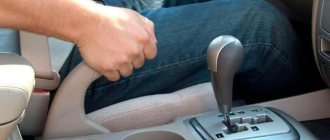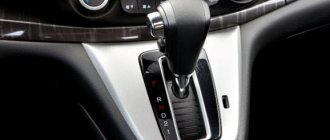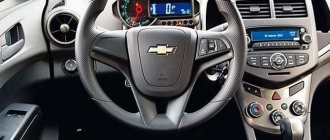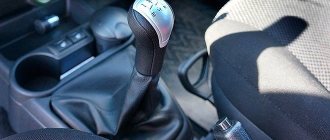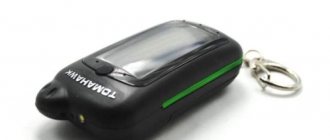Automatic transmissions are becoming increasingly popular in the market. If someone at one time thought that understanding the mechanics was not easy, then it’s time to plunge into the wonderful world of automatic transmission operating rules! Before trying to pull the lever, it is recommended that you read the instruction manual , which was created for a specific box model for a specific machine. This is useful not only because different automatic transmissions may have a different number of available modes, but also because the symbols of the modes in different models do not always coincide.
Today it is customary to distinguish three types of automatic transmissions: “robotic mechanics”, “stepless variator” and “classic”. All of them (depending on the specific model and manufacturer) differ in the number of modes, as well as in the stroke of the lever (straight, zigzag). However, the basic functions of all automatic transmissions are completely the same.
Despite the apparent complexity, the automatic transmission is very easy to use. This is precisely the reason for the ever-growing popularity of such boxes.
How did I come to this question?
I can’t say that I haven’t tried to find out information about these automatic transmission modes from my friends. However, none of them was able to answer this seemingly simple question. And I would have remained in the dark if one day my friend and I had not decided to take a trip outside the city.
Each of us drove our own car. And since the comrade knew the road better, he moved first. Ahead of us was a section with constant ups and downs, on which I constantly slowed down. At first glance, my friend was driving the same way, but I noticed that his brake lights did not turn on, despite the fact that the car was clearly slowing down.
Fearing a breakdown, I called him and asked him to stop. At a nearby parking lot I asked him a question about the brake lights. And imagine my surprise when he replied that he did not slow down at all on the slopes.
Mode "N" or "Neutral"
The third main mode on the machine is the “Neutral” mode. In this mode, the car can move freely back and forth without engine input. Most often indicated by the “N” icon and is located between the “Reverse” and “Drive” modes.
The “Neutral” mode is provided in the automatic transmission as a service mode, in which the car can be moved short distances if the engine does not start. The instructions for many automatic transmissions indicate that in this mode you can tow the car over distances of 20-50 km at speeds of up to 20-30 km/h. However, in practice, if the service is located further than 3-5 km, it is better to immediately call a tow truck.
This recommendation is due to the fact that when the car is moving, oil must constantly circulate in the automatic transmission, and when the engine is turned off, the oil pump does not work. That is, some parts of the automatic transmission do not receive the necessary lubrication and may fail. A trip on a tow truck will not cost much, but serious problems with the automatic transmission can be avoided.
It is also necessary to note another common mistake that owners of cars with automatic transmission make, related to the “Neutral” mode. They often believe that the “Neutral” mode on an automatic transmission is the same as the “neutral” mode on a manual transmission and turn on this mode at the same time as they would turn it on on a manual transmission, for example, when approaching a traffic light. However, it is not. An automatic transmission is a much more complex unit and the “Neutral” mode is a service mode, which can only be used for its intended purpose, for example, for loading onto a tow truck and delivering the car to a service center. Any other use of this mode may cause automatic transmission failure.
Unexpected news
My friend first asked a simple question - am I really not moving on descents in a lower gear? To be honest, before I didn’t even realize that you could drive in a lower gear with an automatic gearbox. But it turns out it is possible. And it is for this purpose that automatic transmissions have special modes, which not all vehicle owners know about.
It turns out that car manufacturers have thought about this issue for a long time. The fact is that if you constantly press the brake pedal on a descent, you can burn the pads or overheat the brake disc. To avoid this, manufacturers specifically came up with special modes into which it is impossible to switch above third gear.
Main modes:
"P"
This mode is used when parking. You can turn it on only after the car has come to a complete stop on a level surface. The transition to “P” mode is carried out before the brake pedal is released. After switching, the motor will be disconnected from the transmission. An additional gear is used for locking.
Important: if you use “P” while driving, you can break the locking gear, which can lead to expensive engine repairs.
Also, you cannot use the described mode without the car’s hand brake, when parking on a slope exceeding 15 degrees.
"R"
Reverse driving mode. Reverse can only be activated after the vehicle has come to a complete stop. Before starting to move backwards, you should wait approximately 1.5 seconds. Without pressing the lock button on the automatic transmission handle, you can only switch from this mode to neutral.
"N"
Neutral gear. In it, the engine idles (does not transmit torque to the wheels). Typically, neutral is used for short stops. It is highly not recommended to engage neutral gear until the car has stopped. Neutral is also used when towing a car. In this case, towing should take place at a speed no higher than 45 km/h (and for a short time).
You can return to the same mode without removing the button from the “Drive” mode when you come to a complete stop.
"D", "D1", "D2", "D3"
The main operating mode of the automatic transmission is indicated by the letter “D”. Driving in 4 gears. In this mode, depending on the current pressure of the gas pedal, the electronics itself will downshift or upshift.
Modes designated simply by numbers (1, 2, 3) or the letter “D” with one of the numbers mean lower gears. Accordingly, in 3 gear the box will not shift above third gear. In 2nd gear the automatic transmission will not shift above 2nd gear.
Mode “D1” or “1” or “L” is the use of only first gear. It is used in cases where the vehicle speed cannot exceed 25 km/h. Under no circumstances should this mode be activated while driving at high speed! Otherwise, loss of control and skidding may occur. “Unity” is also used in situations where you need to make full use of the car’s engine braking capabilities.
Advantages and disadvantages of automatic transmission
The mere fact that the classic automatic transmission is still installed on new car models speaks of its good reputation. However, there are many opponents who prefer the good old “mechanics” and criticize the short service life of the automatic transmission and expensive repairs. The truth, as always, is somewhere in the middle.
Automatic transmission has many advantages:
- Convenience. There is no clutch basket, no additional pedal;
- The torque converter does an excellent job of clutch function, including damping sudden crankshaft vibrations (in a manual transmission, this task is performed by a dual-mass flywheel). Such a system spares the engine, the gearbox itself, and the chassis;
- The system itself selects the optimal gear ratio, and there is no need to worry about how to drive and in what gear;
- Reliability of the mechanism. Despite its complexity, the automatic transmission is quite reliable, if, of course, it is used correctly.
There are also disadvantages because of which many car enthusiasts prefer not to mess with automatic transmissions:
- The need for regular maintenance. Replacing fluid and filters must be done strictly at certain intervals, and the level and condition of the fluid in the box must be monitored no less carefully than the oil level in the engine;
- Repair cost. Due to the rather complex design, as well as significant weight, it is almost impossible to repair the box yourself. Special equipment is required, including for diagnostics;
- Poor foolproofing. It is much easier to damage an automatic transmission than a manual one, especially for those who like to suddenly pull away from a traffic light;
- Higher fuel consumption than with a manual;
- If there is a serious malfunction of a car with an automatic transmission, you will have to call a tow truck: this transmission does not like to be moved “on a tie” - again additional costs.
It should be noted that the persistent opinion about the unreliability of “automatic machines” has a certain basis: some of their modifications actually turned out to be unsuccessful. However, there are also ultra-reliable models from reliable manufacturers that can last hundreds of thousands of kilometers.
What are adaptive transmissions
This term refers more to the control system, and not to the automatic transmission itself.
The development of “electronic” transmissions has led to the emergence of adaptive gearboxes. The developed control algorithms become more intelligent, which leads to the emergence of new characteristics. The on-board computer monitors the driver's driving style and adjusts accordingly. The operating algorithm takes into account the wear of friction control elements. This increases the resource and efficiency of the box.
Automatic transmission operating principle - service life
The load on the engine and the speed of the car affect the time required to change gears. The control system determines the hydraulic influences required for operation. Elements of the planetary mechanism (brakes, clutches) change the gear ratio, establishing the optimal engine mode under given conditions.
We discussed the operating principle and design of an automatic transmission above. The efficiency of the unit depends on the level of the working solution, which must be controlled. ATF oil operates at 80 degrees Celsius. In winter, the car must be warmed up so as not to damage the plastic of the unit. In hot weather, on the contrary, cool with an oil radiator (air) or refrigerant.
How does a car's automatic transmission work? In practice everything is very simple. The main selector designations are usually called in English (the explanation is given in parentheses):
- Drive (to move forward);
- Reverse (reverse);
- Parking (blocks the transmission output shaft for parking);
- Neutral (“neutral”);
- Manual (to switch to manual control).
These are the basic modes. If you are faced with additional options, review the information from the manufacturer.
Mistakes when choosing an automatic transmission
When selecting an automatic transmission, you should focus on the letter code, but there are interchangeable components with different codes. So, if you managed to find an automatic transmission for your car model in the catalog, and its code does not match the code of your “original” transmission, you need to check with a specialist or dealer whether they are interchangeable.
When replacing an automatic transmission with a contract one, errors may occur due to incorrect selection:
- the boxes differ in hardware, that is, they have a different design of the mechanical part (this happens if an automatic transmission from a restyled version was purchased for an old car model);
- connection dimensions are not suitable;
- the body (bell) may differ in the number of holes in the attachment to the lower support (if the other parameters are the same and the bell on the “original” box is in good condition, it can be transferred to a new one);
- It is not possible to correctly connect the automatic transmission to the control mechanisms; this problem is especially common when purchasing an automatic transmission with an electronic control unit.
Boxes with the same markings may differ in sensors, in which case they are not interchangeable. For example, in Honda cars, S4TA cable automatic transmissions are interchangeable in CRV and Stepwgn models, and automatic transmissions in Orthia and Smx models differ from them and from each other in sensors, although the markings on the boxes for all four models are the same. The problem is solved by transferring sensors from the old (“original”) box to a new (contract) one, if the old one has them in good order.
There may be a discrepancy in the gear ratio; this information is usually encoded at the end of the marking. If the boxes are compatible in all basic parameters, the contract automatic transmission must be installed together with the gearbox. You also need to take into account the compatibility of the automatic transmission with a specific engine model; sometimes this point is ignored.
An automatic transmission breakdown is often caused by a malfunction of the transformer, so a contract gearbox must be sought and purchased complete with a torque converter, otherwise it will suffer the same fate as its predecessor. It is extremely difficult to find a new automatic transmission with a torque converter; among contract ones, such options are much more common.

